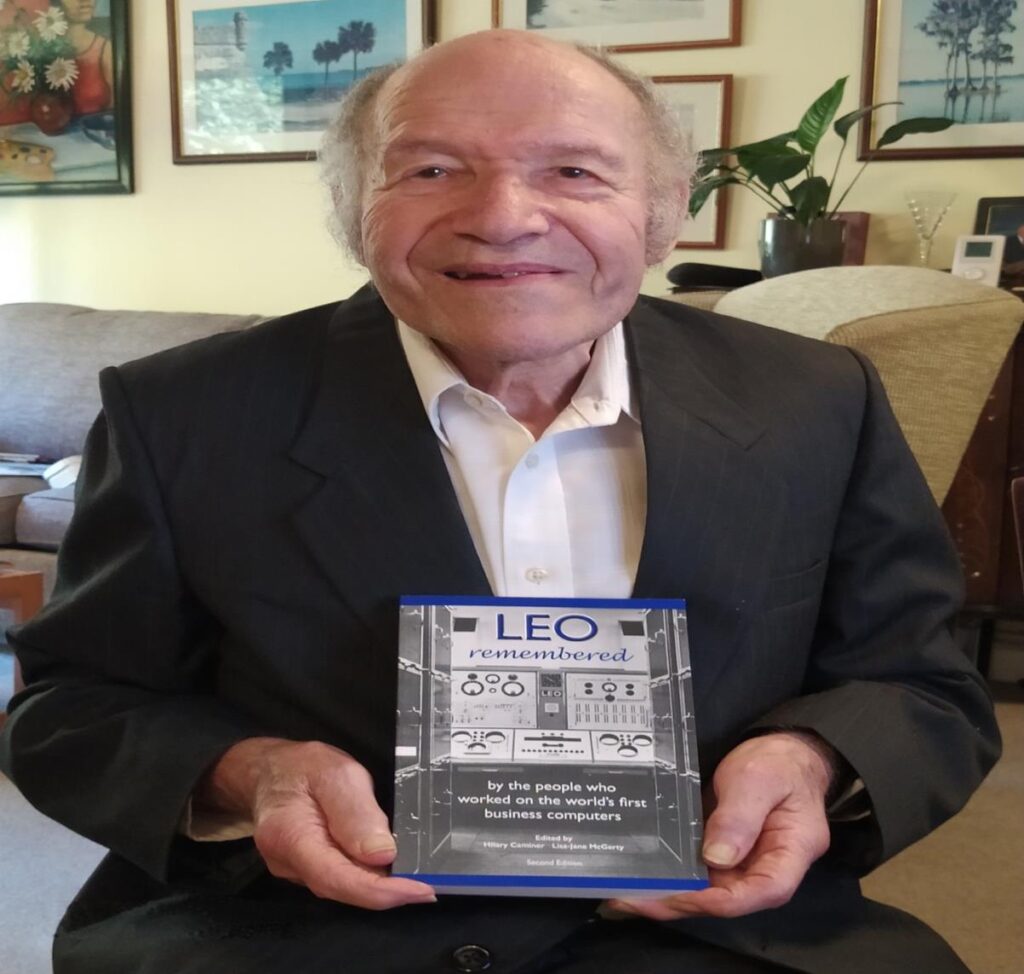in Caminer, D.T., et al, editors, LEO: The Incredible Story of the World’s First Business Computer, McGraw-Hill, New York, Part 4, Chapter 27, pp.321-336.
Aris, J.B.B., (1997), The LEO approach an evaluation Read More »
in Caminer, D.T., et al, editors, LEO: The Incredible Story of the World’s First Business Computer, McGraw-Hill, New York, Part 4, Chapter 27, pp.321-336.
Aris, J.B.B., (1997), The LEO approach an evaluation Read More »
The Improbable Story of LEO (Lyons Electronic Office), published as background story for 60th anniversary of roll-out of first LEO job.
See ComputingHistory.org
Google Drive LEO 60th editorial backgrounder
Aeberhard, J., (2011), From Tea Shops to Computer Company: Read More »
Improbable Story of LEO, Resurrection, Number 88, Winter/Spring, 2019/2020, online at The Computer Conservation Society
Aeberhard, J., (2019), From Tea Shops to Computer Company: Read More »
In Caminer, H., (Editor), Behr, B., (Production), (2019). LEO Matters, LEO Computers Society, Vol 6, pages 14-16, Autumn.
Aeberhard, J.,(2019)Reminiscences of my PR role with LEO. Read More »
IN AT THE START OF BUSINESS COMPUTING
Photo caption:

Frank Land, now in his nineties, an early LEO programmer, with the new book, “LEO remembered.” He led the LEO company’s early sales and systems consultancy team for 15 years and then took his experience in another direction into academic research and education.
1. The LEO Computers Society is committed to promoting and protecting LEO’s history. Membership of the Society is open to all ex-employees of LEO Computers and its succeeding companies, anyone who worked with a LEO computer and anyone with a specific interest in the history of LEO Computers. Among its members are pioneers from the very early days of computing and membership is currently free of charge. Visitwww.leo-computers.org.uk. Follow @leocomputers51.
2.. Established in 2006, the Centre for Computing History is a charitable heritage organisation with a strong focus on learning. Since opening in Cambridge in August 2013, the Centre has helped people understand how tech has shaped the modern world and revolutionised the way we live, work and play through interactive displays and exhibitions, our schools programme, learning events and
workshops, and an astonishing collection of computers old and new. Visit www.computinghistory.org.uk. Follow @computermuseum
Aeberhard, J (2022) LEO Remembered published 28thSeptember 2022 – Press Release. Read More »
in Museum Victoria Collections http://collections.museumvictoria.com.au/articles/12682 This link is broken but some relevant information is at CCH https://www.computinghistory.org.uk/det/51031/LEO-Computers-in-Australia/
Ainsworth, B. (2013) Leo Computers in Australia Read More »
How the Cambridge Electronic Calculator works, J. Lyons & Co., June 1949. EDSAC
Anon (1949) ‘A non-technical description of E.D.S.A.C’. Read More »
Lyons Office Journal, Vol. 2, Number 21, March. Report with photo of the visit which includes meeting John Simmons and T.R. Thompson showing LEO I to Royal Party. A copy is held in the London Metropolitan Archive under catalogue number ACC/3527/310
Anon, (1951), A Royal Visitor: Princess Elizabeth visits Cadby Hall Read More »
J. Lyons & Co.
Intended for the Lyons’ Management only a small number were printed. The original version was about 75 pages, though later versions were much longer. Copies are held in
the John Simmons Archive at Warwick University Modern Records Centre Showcase: Pioneers: Innovators in Science and Technology, and can be downloaded from: http://contentdm.warwick.ac.uk/cdm/ref/collection/leo/id/263 http://www2.warwick.ac.uk/services/library/mrc/explorefurther/images/pioneers/ files as item MSS.363/S4/12 and at the University of Manchester John Rylands Library, http://archives.li.man.ac.uk/ead/html/gb133nahc-leo-p1.shtml, filed as item
C130. Appendix 13 in Peter Bird’s book LEO: The First Business Computer is extracted from the guide.
Anon (1952) ‘The Laymans Guide to LEO’, Read More »
in Caminer, D.T., et al, editors, LEO: The Incredible Story of the World’s First Business Computer, McGraw- Hill, New York, Part 3, Chapter 20, pp. 243 – 248.
Archibald, H., (1997), Stewarts and Lloyds Steelworks, Read More »